Related Research Articles
Sigismund I may refer to:

Sigismund II Augustus was King of Poland and Grand Duke of Lithuania, the son of Sigismund I the Old, whom Sigismund II succeeded in 1548. He was the first ruler of the Polish–Lithuanian Commonwealth and the last male monarch from the Jagiellonian dynasty.

Švitrigaila was the Grand Duke of Lithuania from 1430 to 1432. He spent most of his life in largely unsuccessful dynastic struggles against his cousins Vytautas and Sigismund Kęstutaitis.

The House of Gediminid or simply the Gediminids were a dynasty of monarchs in the Grand Duchy of Lithuania that reigned from the 14th to the 16th century. A cadet branch of this family, known as the Jagiellonian dynasty, reigned also in the Kingdom of Poland, Kingdom of Hungary and Kingdom of Bohemia. Several other branches ranked among the leading aristocratic dynasties of Russia and Poland into recent times.

Sigismund Korybut was a duke from the Korybut dynasty, best known as a military commander of the Hussite army and a governor of Bohemia and Prague during the Hussite Wars.
Žygimantas is a Lithuanian masculine given name. It is a two-stem name of Baltic origin consisting of the root žyg and man(t)-. The Lithuanian word žygis means a military march from one location to another, while the second part might stem from the word manta, meaning wealth, benefit or mantus, which means convenient, suitable. Thus, the meaning behind Žygimantas could be a man adapted to military marches or someone with a wealth of military campaigns.
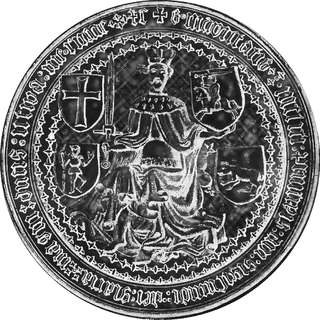
Sigismund Kęstutaitis was the Grand Duke of Lithuania from 1432 to 1440. Sigismund was his baptismal name, while his pagan Lithuanian birth name is unknown. He was the son of the Grand Duke of Lithuania Kęstutis and his wife Birutė.
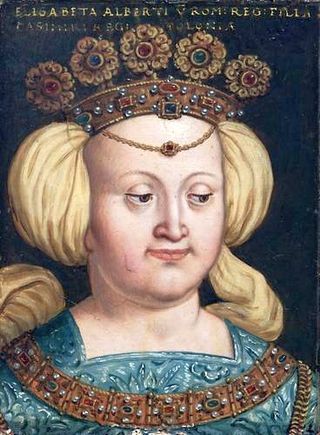
Elizabeth of Austria was Queen of Poland and Grand Duchess of Lithuania as the wife of King Casimir IV of Poland. Orphaned at an early age, she spent her childhood in the court of Holy Roman Emperor Frederick III. As one of the three surviving grandchildren of Emperor Sigismund, she had a strong claim to the kingdoms of Hungary and Bohemia. That made her an attractive bride for a Polish prince. The Polish nobility, seeking to increase Polish influence in Hungary and Bohemia, pursued marriage with Elizabeth since she was born and finally succeeded in 1454. Her marriage to Casimir was one of the most successful royal marriages in Poland. She gave birth to thirteen children, eleven of whom survived to adulthood. Four of her sons were crowned as kings.
Sigismund of Lithuania may refer to:
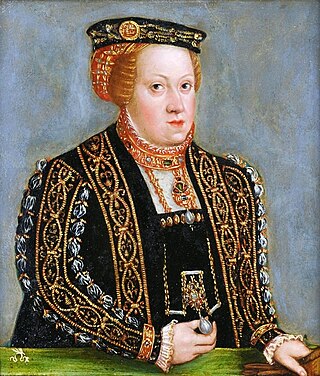
Catherine of Austria was one of the fifteen children of Ferdinand I, Holy Roman Emperor and Anna of Bohemia and Hungary. In 1553, she married Polish King Sigismund II Augustus and became Queen consort of Poland and Grand Duchess consort of Lithuania. Their marriage was not happy and they had no children together. After a likely miscarriage in 1554 and a bout of illness in 1558, Sigismund became increasingly distant. He tried but failed to obtain a divorce from the pope. In 1565, Catherine returned to Austria and lived in Linz until her death. Sigismund died just a few months after her, bringing the male line of the Jagiellon dynasty to its end. The dynasty would continue, strictly speaking, for one more reign—that of Sigismund Augustus’ sister, Anna Jagiellon, who was crowned with the male title of Rex Poloniae.
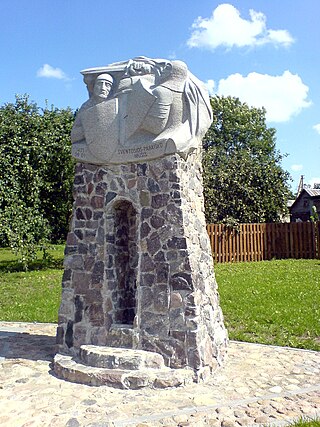
The Battle of Wiłkomierz took place on September 1, 1435, near Ukmergė in the Grand Duchy of Lithuania. With the help of military units from the Kingdom of Poland, the forces of Grand Duke Sigismund Kęstutaitis soundly defeated Švitrigaila and his Livonian allies. The battle was a decisive engagement of the Lithuanian Civil War (1432–1438). Švitrigaila lost most of his supporters and withdrew to southern Grand Duchy; he was slowly pushed out and eventually made peace. The damage inflicted upon the Livonian Order has been compared to the damage of Battle of Grunwald upon the Teutonic Order. It was fundamentally weakened and ceased to play a major role in Lithuanian affairs. The battle can be seen as the final engagement of the Lithuanian Crusade.

Jonas Gostautas or Goštautas was a Lithuanian nobleman from the Grand Duchy of Lithuania of the Gasztołd (Goštautai) noble family, a politician and skillful land owner. He served as Chancellor of Lithuania between 1443 and 1458 and was a very close advisor and mentor to Casimir IV Jagiellon before he became the third Jagiellonian King of Poland. Gostautas was not his surname, but a pagan Lithuanian given name retained after baptism by his immediate ancestor, while Jonas was his Christian name. His heirs, e.g., his sons like Martynas Goštautas, perhaps inherited the name as a surname. In 1413 at the Union of Horodło, Jonas was adopted by the Polish nobles into the Abdank clan.

The Lithuanian Civil War of 1432–1438 was a war of succession to the throne of the Grand Duchy of Lithuania, after Vytautas the Great died in 1430 without leaving an heir. The war was fought on the one side by Švitrigaila, allied with the Teutonic Knights, and on the other by Sigismund Kęstutaitis, backed by the Kingdom of Poland. The war threatened to sever the Union of Krewo, the personal union between Poland and Lithuania. Švitrigaila's alliance with the Grand Master of the Teutonic Order, Paul von Rusdorf, launched the Polish–Teutonic War (1431–1435) but failed to secure victory for Švitrigaila.
Prince Feodor Ostrogski (1360–1446) was a magnate in Volhynia of Rurikid stock, son of Danylo Ostrozky. In some sources he is called Teodor, Fedko or Frederic. He was active in the Hussite Wars and assisted Sigismund Korybut.

The family of Kęstutis, Grand Duke of Lithuania (1381–1382), is listed here. He co-ruled with his brother Algirdas from 1345 to 1377.
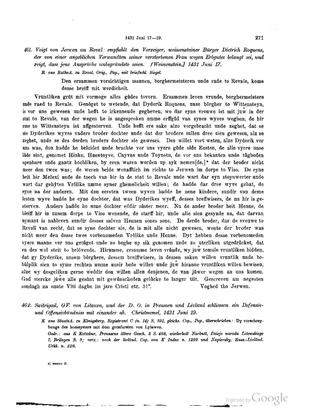
The Treaty of Christmemel was a treaty signed on 19 June 1431 between Paul von Rusdorf, Grand Master the Teutonic Knights, and Švitrigaila, Grand Duke of Lithuania. Švitrigaila was preparing for a war with Poland to defend his claim to the Lithuanian throne and sought allies. The treaty established an anti-Polish alliance and prompted the Knights to invade the Kingdom of Poland, starting the Polish–Teutonic War (1431–35). Lithuania also surrendered Palanga and three miles of the coastline on the Baltic Sea, thus modifying the Treaty of Melno of 1422.
Sigismund of Brandenburg (1538–1566) was Prince-Archbishop of Magdeburg and Administrator of the Prince-Bishopric of Halberstadt.

The Jagiellonian or Jagellonian dynasty, otherwise the Jagiellon dynasty, the House of Jagiellon, or simply the Jagiellons, was the name assumed by a cadet branch of the Lithuanian ducal dynasty of Gediminids upon reception by Jogaila, the Grand Duke of Lithuania, of baptism as Władysław in 1386, which paved the way to his ensuing marriage to the Queen Regnant Jadwiga of Poland, resulting in his ascension to the Crown of the Kingdom of Poland as Władysław II Jagiełło, and the effective promotion of his branch to a royal dynasty. The Jagiellons reigned in several European countries between the 14th and 16th centuries. Members of the dynasty were Kings of Poland (1386–1572), Grand Dukes of Lithuania, Kings of Hungary, and Kings of Bohemia and imperial electors (1471–1526).
References
- ↑ "Žygìmantas". Vardai VLKK (in Lithuanian).